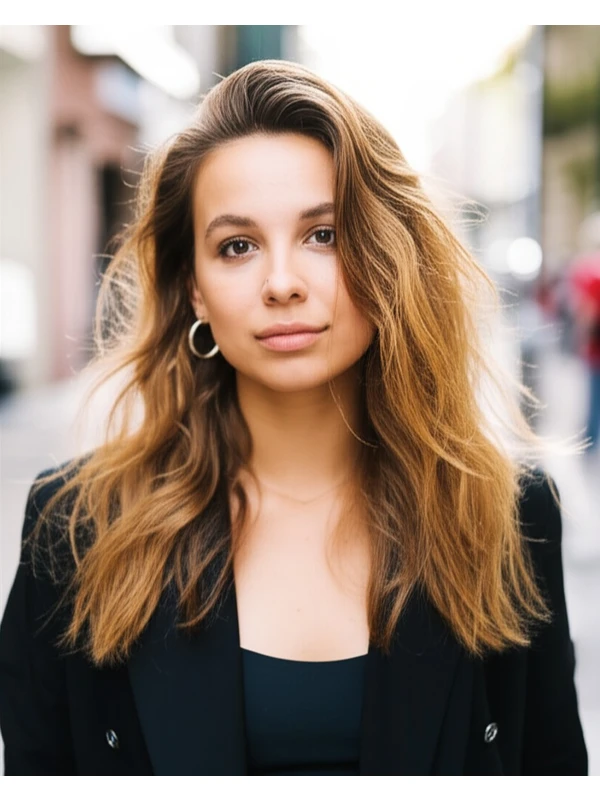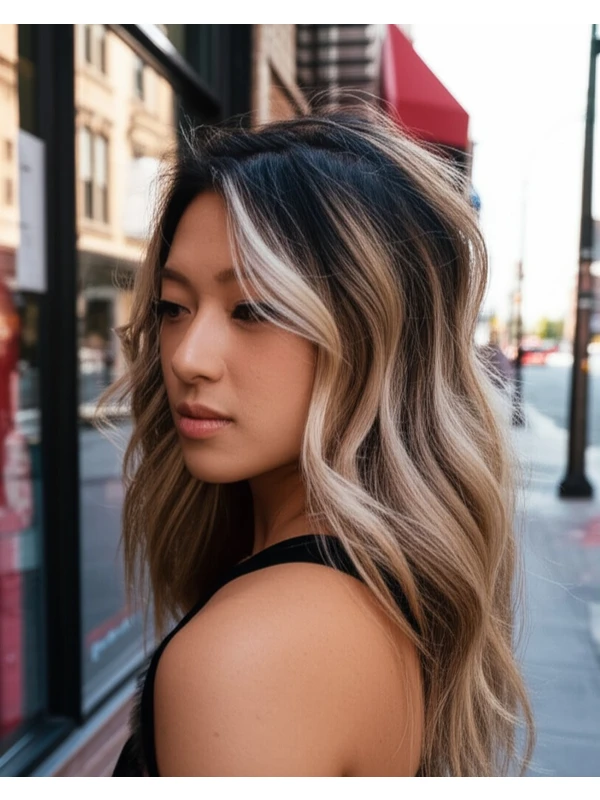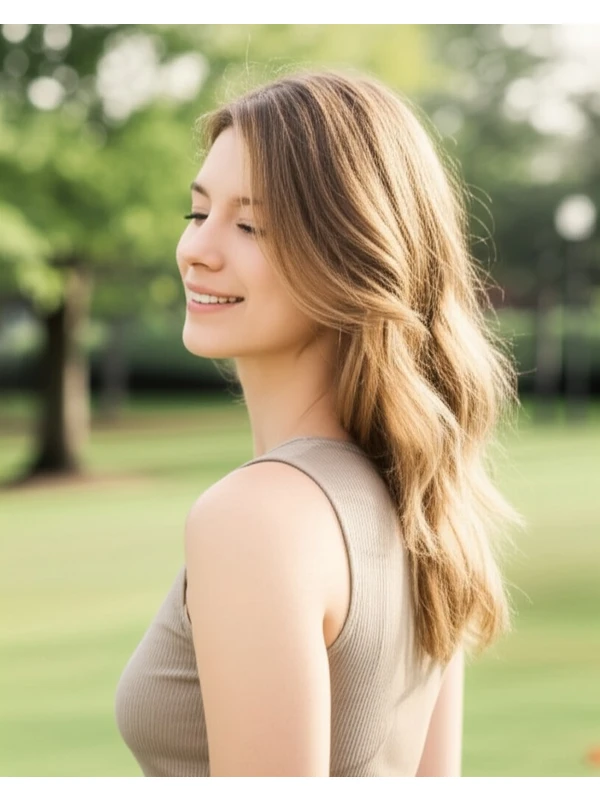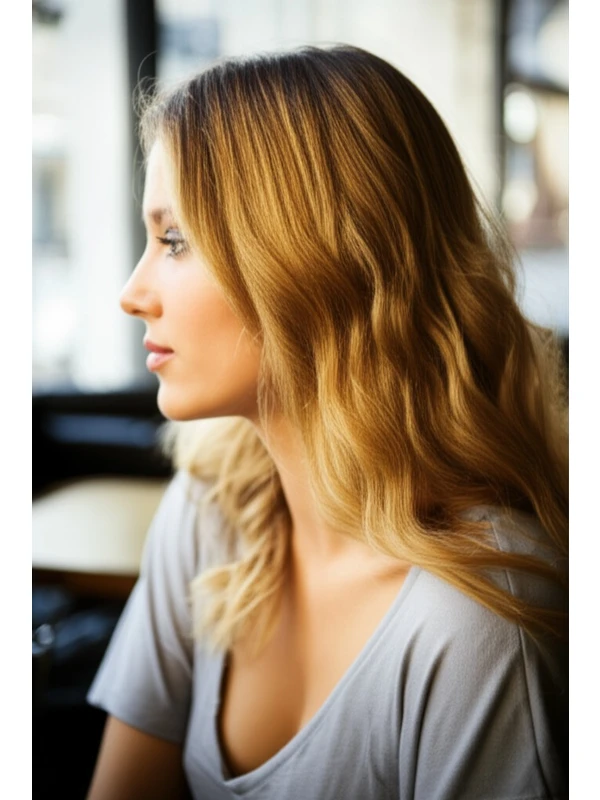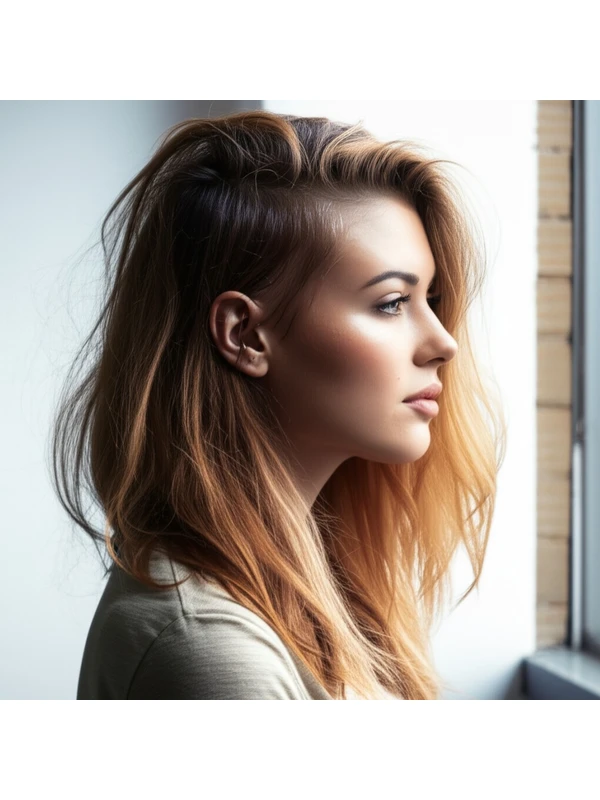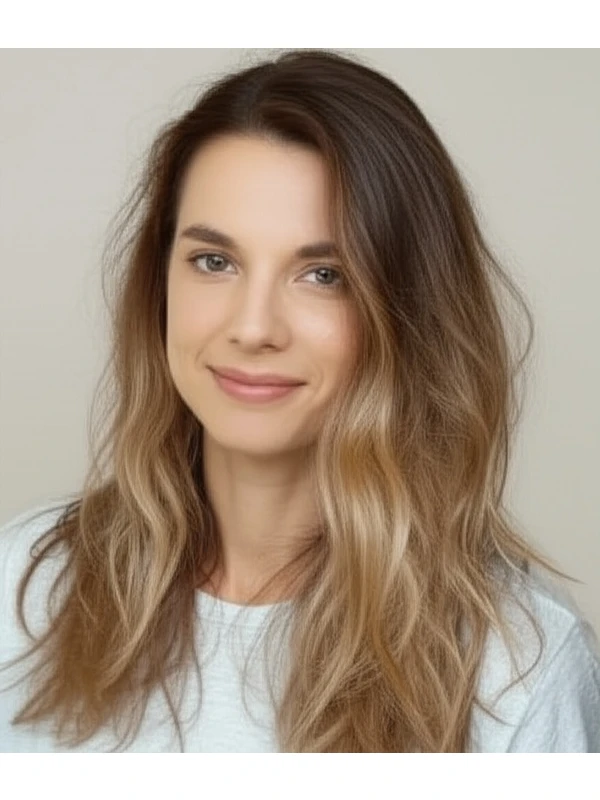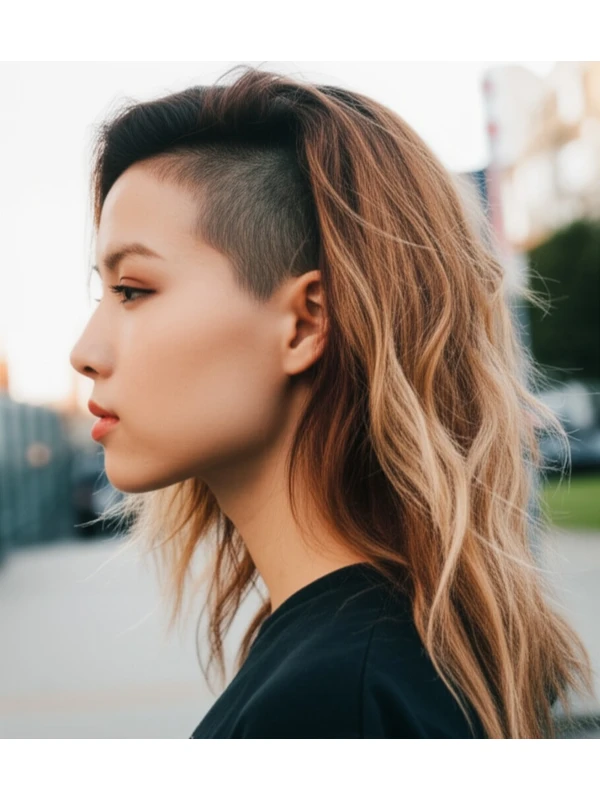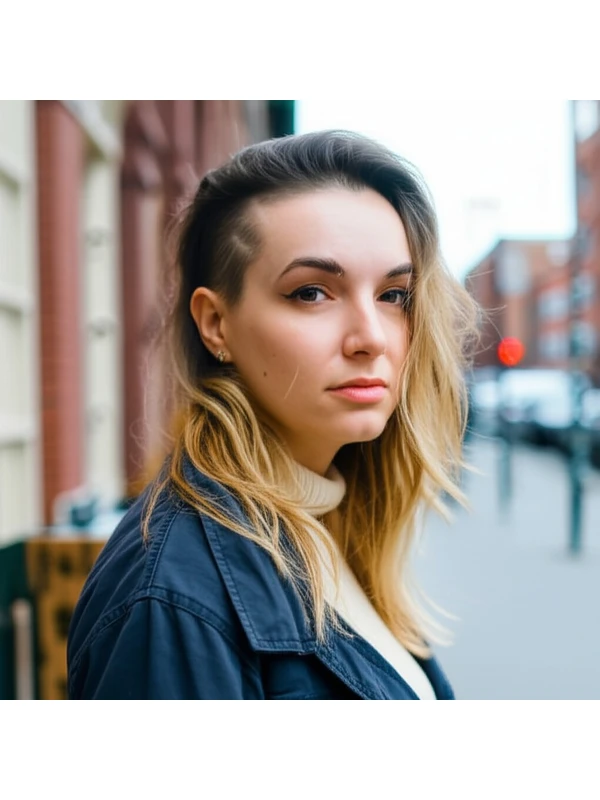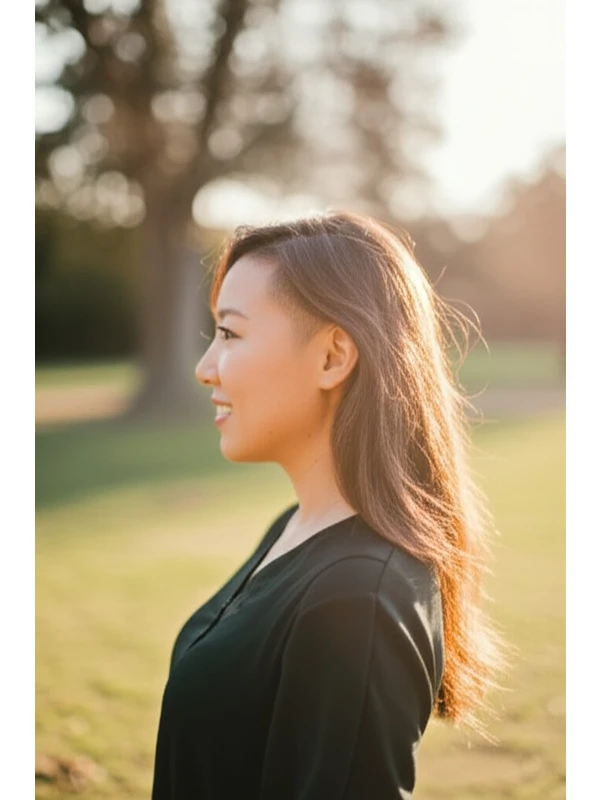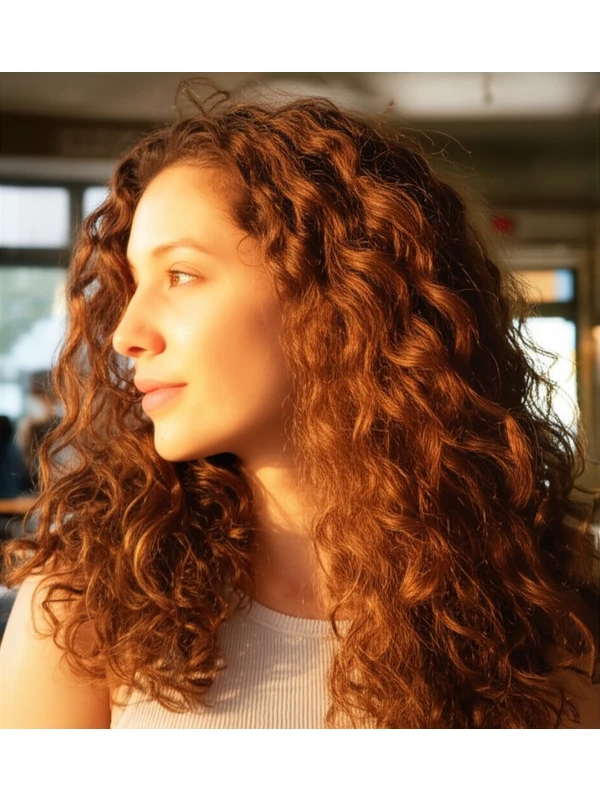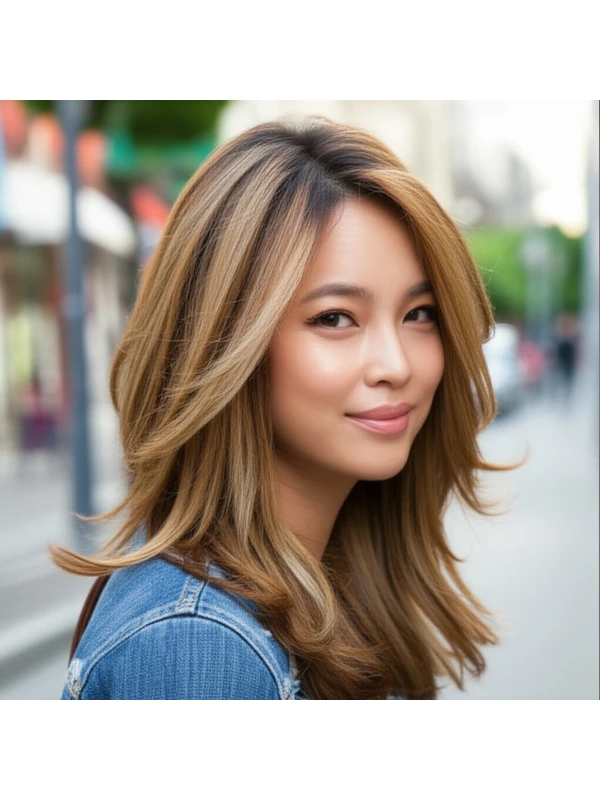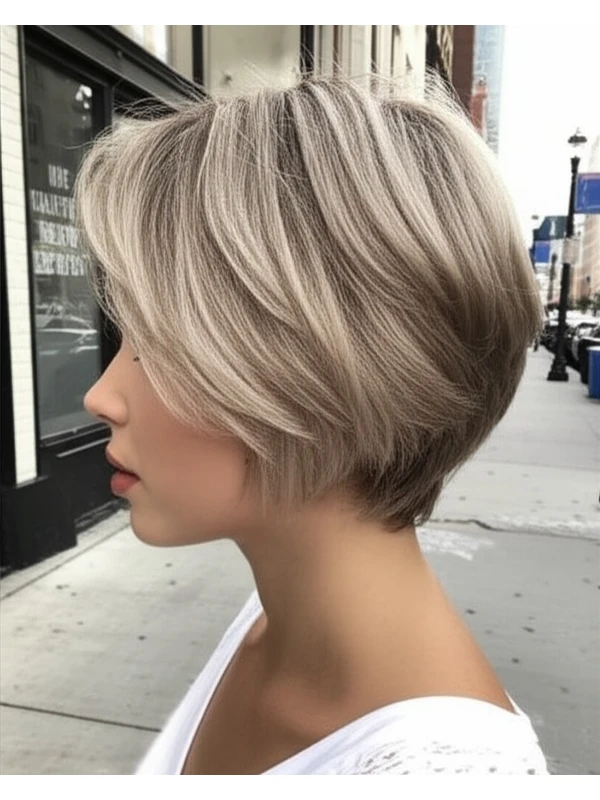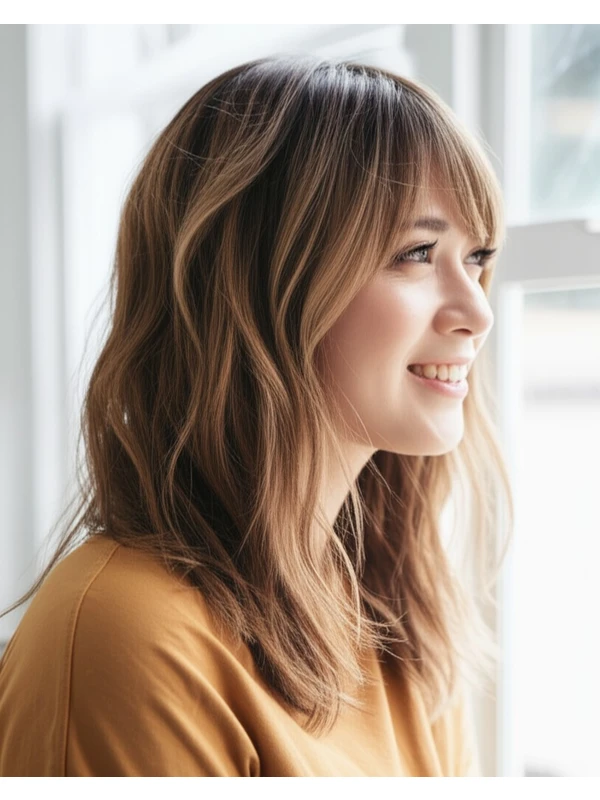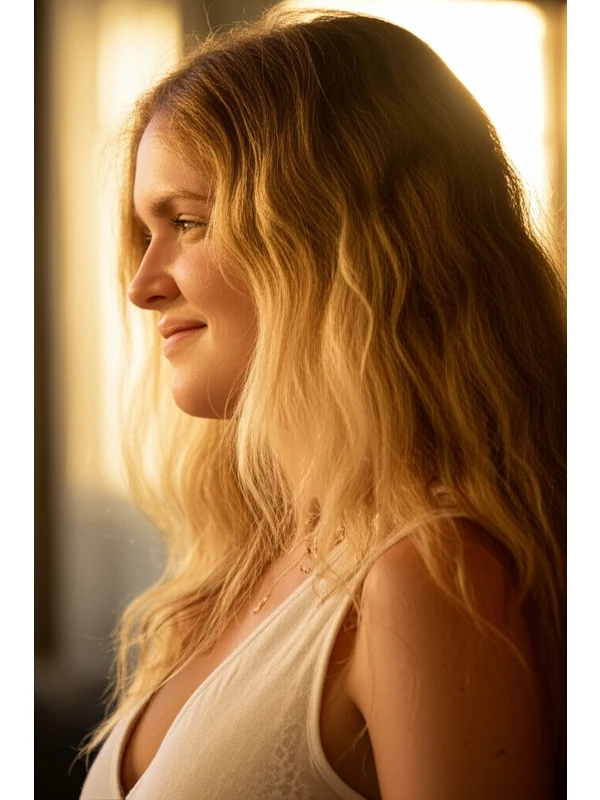#The Undercut Long: A Bold & Beautiful Style Guide
The "undercut long" hairstyle is having a moment – and for good reason! It's a statement look that combines the drama of an undercut with the versatility of longer hair, offering plenty of styling options. But it’s more than just a trend; when done right, it can flatter almost any face shape and hair type. Let’s dive into everything you need to know about this captivating style.
#1) Background & Definition: What is an Undercut Long?
An undercut long combines the contrast of short-cropped sides or back (the "undercut" portion) with longer lengths on top and around the face. The key feature isn’t just the short sections, but how they interact with the length above. Think dramatic asymmetry, a peekaboo effect, or a subtle edge – it's all about visual interest.
Key Features:
- Contrast: The most defining element is the stark difference in hair lengths.
- Visual Interest: The undercut creates unexpected angles and shapes.
- Versatility: Offers many styling options from sleek to textured, casual to formal.
Typical Length Ranges:
- Undercut Section: Can range from very short (almost shaved – think 1/4 inch) to slightly longer (around an inch or two). The shorter the undercut, the bolder the statement.
- Top/Face-Framing Lengths: Typically falls between collarbone length and shoulder length or longer.
Alternative Names:
You might hear this style referred to as: "hidden undercut," "long layered undercut," “asymmetrical long hair,” or simply a “modern undercut.”
#2) Face Shape Fit: Finding Your Angle
The beauty of the undercut long is its adaptability, but understanding how it interacts with your face shape is key. Here's a breakdown:
- Oval: Lucky you! This style generally looks fantastic on oval faces. The longer layers can be styled to accentuate cheekbones and jawlines. Fringe Options: A wispy fringe or curtain bangs soften the look further.
- Round: The undercut adds angles that slim a round face. Volume at the crown is crucial – avoid flat, one-length styles. Fringe Options: Side-swept bangs or longer, angled pieces help elongate the face. Avoid blunt, straight-across fringes.
- Square: Soften strong jawlines with layered top lengths and gentle curves around the face. The undercut can visually narrow a wider jawline. Fringe Options: A soft, textured fringe that blends into the layers is ideal.
- Heart: The longer pieces help balance a wider forehead and narrower chin. Volume at the sides adds width to offset the heart shape. Fringe Options: Side-swept bangs or a wispy fringe can soften the brow line.
- Diamond: The undercut highlights cheekbones, while longer layers create softness around a pointed chin. Fringe Options: A textured, face-framing fringe adds balance and softens angles.
- Oblong (Long): The goal is to add width rather than length. Volume at the sides and shorter top layers are essential. The undercut can help break up the verticality of a long face. Fringe Options: A full, blunt fringe or heavy side bangs can shorten the appearance of the face.
#3) Body Proportions & Height Guidance
The undercut long isn't just about your face; it considers your overall silhouette:
- Petite: Shorter top lengths and a more subtle undercut prevent overwhelming a smaller frame.
- Average: Most length combinations work well, allowing for greater styling flexibility.
- Tall: Longer layers and a bolder undercut can balance height and add visual interest.
- Narrow Shoulders: Volume on top and around the face creates the illusion of broader shoulders.
- Broad Shoulders: A softer undercut (longer sections) and less volume at the crown helps to soften the overall look, preventing it from feeling too structured.
- Neck Length: Longer necks can handle bolder undercuts; shorter necks benefit from a more gradual transition between lengths.
#4) Works Best With Hair Types & Densities
This style is surprisingly versatile but understanding your hair's natural tendencies is important:
- Straight: The undercut creates clean lines and dramatic contrast. Styling options are endless, from sleek to textured.
- Wavy: The undercut enhances wave patterns by adding layers for definition. Be mindful of frizz – a smoothing serum can be helpful.
- Curly/Coily: This style adds dimension and reduces bulk while showcasing curl or coil pattern. Shrinkage Factor: Account for significant shrinkage! What looks like shoulder-length in the salon might end up shorter when dry. Communicate desired length clearly with your stylist.
- Fine Hair: Layering is essential to create volume on top, but avoid too many layers which can make hair look thinner.
- Medium Hair: This style works beautifully! The undercut adds visual interest without sacrificing fullness.
- Thick Hair: The undercut thins out density and creates movement. Multiple layers are often needed for balance.
#5) Styling Variations: From Casual to Chic
The beauty of this cut lies in its versatility:
- Sleek vs. Textured: Sleek styles emphasize the contrast between lengths, while textured looks embrace natural waves or curls.
- Middle vs. Side Part: A middle part creates symmetry; a side part adds softness and asymmetry.
- Fringe Variations: Wispy fringes, curtain bangs, blunt fringes – experiment to find what suits your face shape best!
- Occasion Styling:
- Casual: Air-dry with a texturizing spray for effortless style.
- Office: Sleek and polished with minimal heat styling.
- Evening: Add volume at the roots, create waves with a curling iron or wand, finish with hairspray.
#6) Maintenance: Keeping Your Style Sharp
- Trim Cadence: Every 6-8 weeks to maintain shape and prevent split ends.
- At-Home Routine: Regular deep conditioning treatments are vital for hydration (especially important for curly/coily textures).
- Heat vs. Air Dry: Minimize heat styling whenever possible. When using heat, always apply a heat protectant.
- Product Checklist:
- Shampoo & Conditioner: Tailored to your hair type.
- Leave-in Conditioner (especially for dry or curly/coily hair).
- Volumizing Mousse (for fine hair) or Smoothing Serum (for frizz control).
- Texturizing Spray or Pomade (for added definition and hold).
- Hairspray: For finishing.
- Estimated Daily Styling Time: 15-45 minutes, depending on desired style and hair type.
#7) Grow-Out Roadmap
- Months 1-3: The undercut is most noticeable; focus on maintaining shape with trims.
- Months 3-6: Top lengths grow out, softening the contrast. Styling becomes more flexible. Consider a face-framing layer adjustment to keep it looking balanced.
#8) Color Pairings: Enhancing Your Look
- Cool Undertones: Ashy blondes, cool browns, and even muted purples enhance the edgy feel of the undercut.
- Warm Undertones: Honey highlights, caramel lowlights, and copper tones add warmth and dimension.
- Low-Commitment Options: Balayage or babylights create subtle pops of color without a harsh root line.
#9) Season & Occasion Guide
- Spring/Summer: Embrace lighter colors and textured styles for a breezy feel.
- Fall/Winter: Richer tones, sleek styles, and added volume add warmth and sophistication.
- Work: A polished, low-maintenance style is key.
- Weddings/Parties: Experiment with more elaborate styling – waves, updos incorporating the undercut reveal!
#10) Cost & Time
- Salon Time: Typically 1.5 - 2.5 hours (can vary depending on hair length and complexity).
- Estimated Price Range: Relatively higher than a standard haircut; expect to pay more for the specialized technique involved – consider it an investment in your look!
#11) Pros & Cons
Pros:
- Versatile styling options.
- Creates visual interest and dimension.
- Can flatter various face shapes and hair types.
- Edgy and modern aesthetic.
Cons:
- Requires regular trims to maintain shape.
- Styling can be time-consuming depending on the desired look.
- The undercut is a commitment – growing it out takes time.
#12) Salon Consultation Script: Your Checklist
To ensure you and your stylist are on the same page, bring these questions/points to your appointment:
- "I'm interested in an undercut long style. Can we discuss what length would best suit my face shape?"
- "Show me some inspiration photos of undercut long styles that appeal to me."
- “How will this cut interact with my hair’s natural texture (waves/curls)?”
- "What styling products and techniques do you recommend for maintaining the style at home?"
- "Can we discuss how to grow out the undercut if I change my mind later on?"
#FAQs
- Is an undercut long suitable for fine hair? Yes, but layering is crucial to avoid a stringy look.
- How much will it shrink when dry (for curly/coily hair)? Discuss desired length with your stylist and account for shrinkage – aim longer than you think!
- Can I do this myself at home? While possible, the precision required makes professional styling highly recommended.
- What if I don't like the undercut after it’s cut? It will grow out over time. In the meantime, strategic styling can help minimize its visibility.
- How often do I need to wash my hair with this style? As needed – frequency depends on your scalp and product usage.
- Can I still wear a ponytail or bun with an undercut long? Absolutely! Experiment with placement to showcase the contrast.

